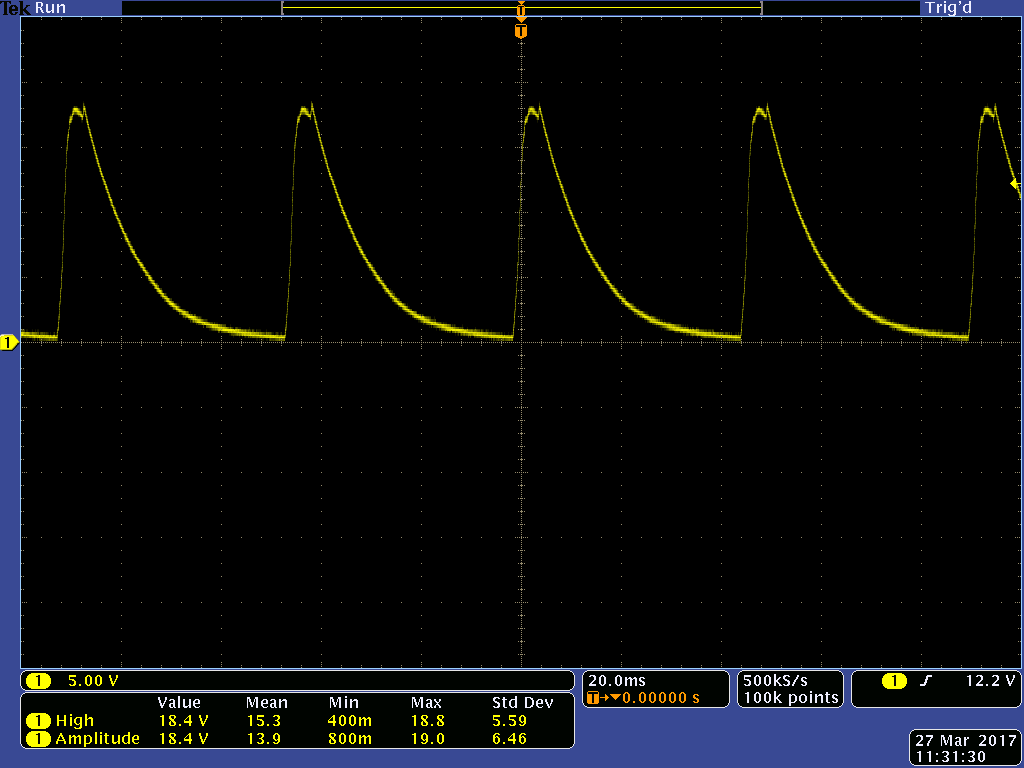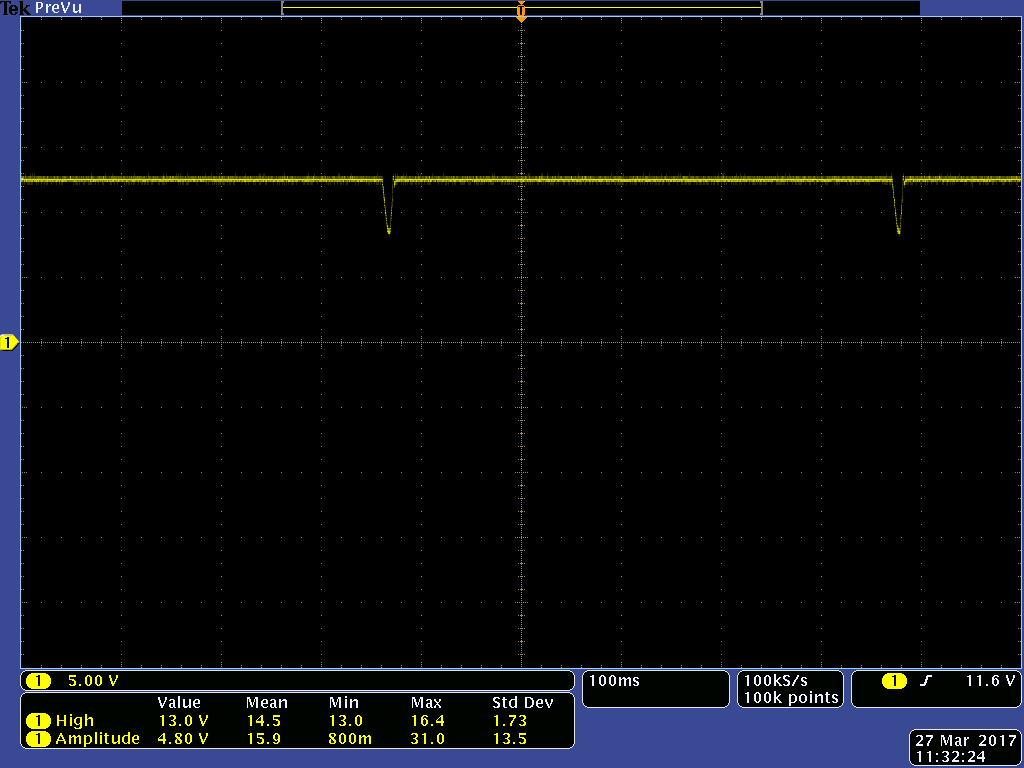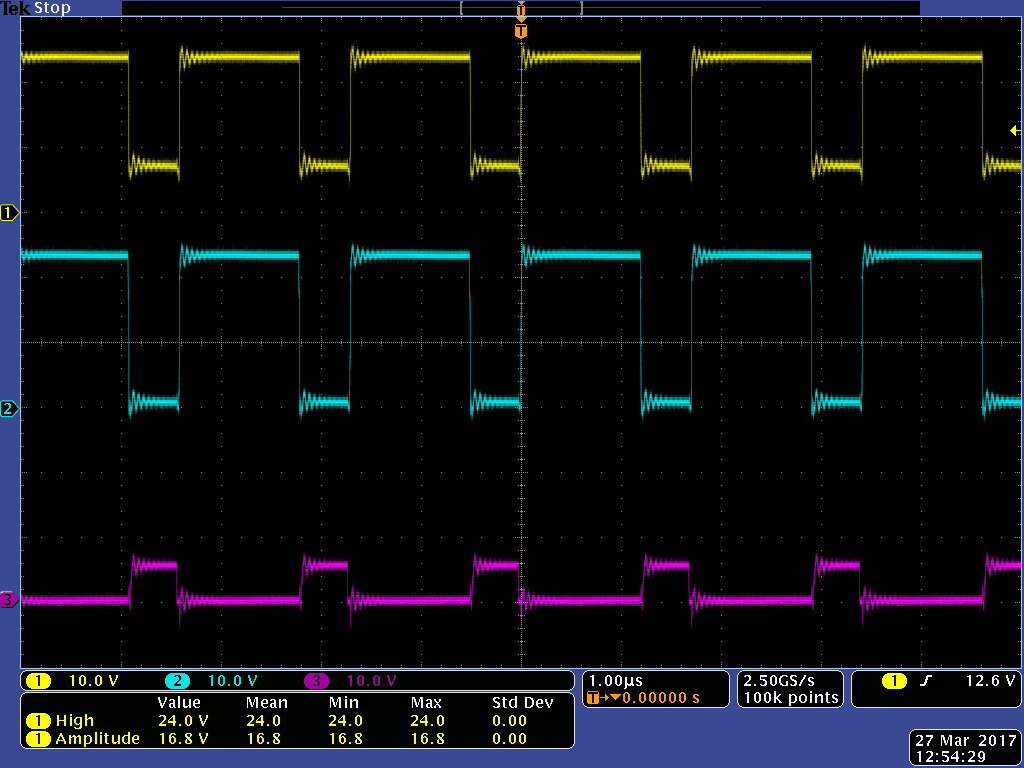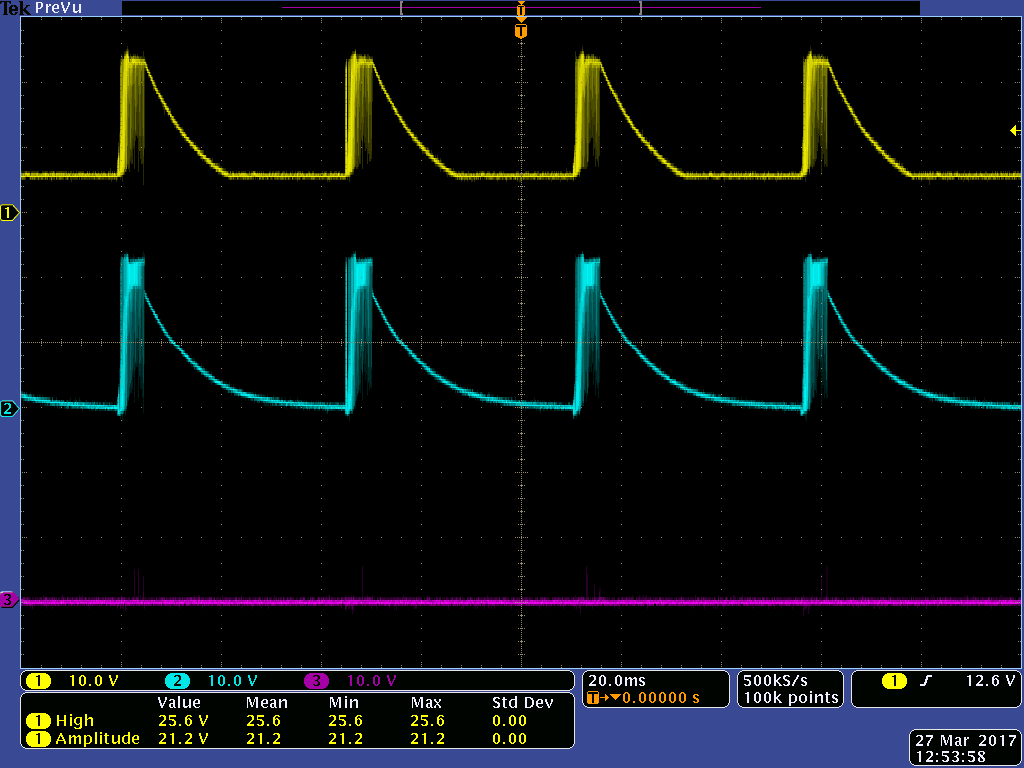Hi,
I’m using BQ24650 to charge a 3-cell Li-Ion battery pack and have some problems.
We overlooked the input RC filter. How important is it? Without it, will the circuit still work without protection?
Is D1 on the datasheet required? We are using a DC power supply instead of the solar panel.
The attached is the scope capture of PH pin (14). The regulator seems to start switching, but only for a short period of time.
Thanks for your help.BQ24650.docx





